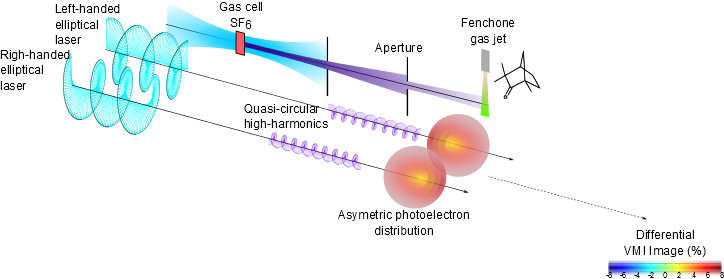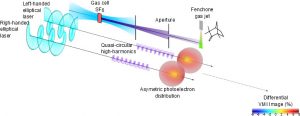Due to their considerable energy, extreme ultraviolet photons ionize all molecules, regardless of the details of their energy structure. For this reason ultrashort light pulses in this spectral range are second to none to probe photochemical processes. In particular they give access to information on the reaction intermediates, which are ephemeral structures whose spectroscopic properties are usually out of reach. Through a collaboration between the Laboratory interactions, dynamic and lasers – LIDyL (CEA), the intense laser center for applications – CELIA (CNRS / CEA / Univ Bordeaux.), The SOLEIL synchrotron, and the Laboratory collisions, aggregates, reactivity – LCAR (CNRS / Univ. Toulouse 3) we have developed a new laboratory scale source that delivers bright coherent ultrashort and quasi-circularly polarized pulses in the extreme ultraviolet. For this, we used resonant high order harmonic generation in a gas submitted to an intense laser pulse. Today, such a circularly polarized light is produced in this range of radiation by just a few large scale facilities such as synchrotrons and, with the notable exception of a few free electron lasers, only quasi-continuously. Specific polarization properties of this new source presage pump probe studies of processes occurring in chiral molecules, that is to say molecules that are not their own mirror image. The ubiquitous role of these molecules in organic chemistry and biology suggests many applications.
http://www.nature.com/nphoton/journal/v9/n2/full/nphoton.2014.314.html




